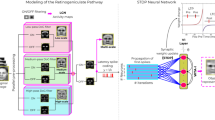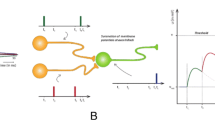Abstract
The remarkable object recognition ability of biological systems allows individuals to have prompt and reliable responses to different stimuli. Despite many implementations, an efficient and effective one is still under exploring. Spiking neural networks (SNNs), following brain-like processing, provide a potential solution for efficient object recognition. The existing SNNs can benefit an efficient feature extraction from a temporal code, but they are vulnerable to noise, less adaptive and vitally poor in recognition accuracy. How could one make full use of the biological plausibility to improve their performance? In this paper, we propose a new temporal-based encoding method with unsupervised matching pursuit. Additionally, a unified SNN framework for image recognition is designed by integrating our encoding with recently advanced synaptic learning. We evaluate our approach on MNIST, with systematic insights into encoding capabilities, robustness to noise, learning efficiency and classification performance. The results highlight the effectiveness and efficiency of our spike-based approach. To date and the best of our knowledge, our approach achieves the best temporal-based accuracy performance. Moreover, our approach requires and consumes fewer number of neurons and spikes, making it significantly advantageous to fast and efficient computation. Our work also contributes to motivating new brain-inspired developments on image classification.
Access this chapter
Tax calculation will be finalised at checkout
Purchases are for personal use only
Similar content being viewed by others
References
Amato, F., López, A., Peña-Méndez, E.M., Vaňhara, P., Hampl, A., Havel, J.: Artificial neural networks in medical diagnosis. J. Appl. Biomed. 11(2), 47–58 (2013). https://doi.org/10.2478/v10136-012-0031-x. ISSN 1214-021X
Beyeler, M., Dutt, N.D., Krichmar, J.L.: Categorization and decision-making in a neurobiologically plausible spiking network using a STDP-like learning rule. Neural Netw. 48, 109–124 (2013)
Burkitt, A.N.: A review of the integrate-and-fire neuron model: I. Homogeneous synaptic input. Biol. Cybern. 95(1), 1–19 (2006)
Chen, C., Seff, A., Kornhauser, A., Xiao, J.: DeepDriving: learning affordance for direct perception in autonomous driving. In: 2015 IEEE International Conference on Computer Vision, Chile, pp. 2722–2730. IEEE (2015)
Diehl, P.U., Cook, M.: Unsupervised learning of digit recognition using spike-timing-dependent plasticity. Front. Comput. Neurosci. 9, 99 (2015)
Gütig, R.: Spiking neurons can discover predictive features by aggregate-label learning. Science 351(6277), aab4113 (2016)
Gütig, R., Sompolinsky, H.: The tempotron: a neuron that learns spike timing-based decisions. Nat. Neurosci. 9(3), 420–428 (2006)
Hopfield, J.J.: Pattern recognition computation using action potential timing for stimulus representation. Nature 376(6535), 33–36 (1995)
Hu, J., Tang, H., Tan, K.C., Li, H.: How the brain formulates memory: a spatio-temporal model research frontier. IEEE Comput. Intell. Mag. 11(2), 56–68 (2016)
Hussain, S., Liu, S.C., Basu, A.: Improved margin multi-class classification using dendritic neurons with morphological learning. In: 20th IEEE International Symposium on Circuits and Systems (ISCAS), Australia, pp. 2640–2643. IEEE (2014)
LeCun, Y., Bengio, Y., Hinton, G.: Deep learning. Nature 521(7553), 436–444 (2015)
Lee, J.H., Delbruck, T., Pfeiffer, M.: Training deep spiking neural networks using backpropagation. Front. Neurosci. 10, 508 (2016)
Merolla, P., Arthur, J., Akopyan, F., Imam, N., Manohar, R., Modha, D.S.: A digital neurosynaptic core using embedded crossbar memory with 45pJ per spike in 45nm. In: 2011 IEEE Custom Integrated Circuits Conference (CICC), USA, pp. 1–4. IEEE (2011)
Perrinet, L., Samuelides, M.: Sparse image coding using an asynchronous spiking neural network. In: 10th European Symposium on Artificial Neural Networks, Computational Intelligence and Machine Learning (ESANN), Belgium, pp. 313–318 (2002)
Perrinet, L., Samuelides, M., Thorpe, S.: Coding static natural images using spiking event times: do neurons cooperate? IEEE Trans. Neural Networks 15(5), 1164–1175 (2004)
Riesenhuber, M., Poggio, T.: Hierarchical models of object recognition in cortex. Nat. Neurosci. 2(11), 1019–1025 (1999)
Roy, K., Jaiswal, A., Panda, P.: Towards spike-based machine intelligence with neuromorphic computing. Nature 575(7784), 607–617 (2019)
Rullen, R.V., Thorpe, S.J.: Rate coding versus temporal order coding: what the retinal ganglion cells tell the visual cortex. Neural Comput. 13(6), 1255–1283 (2001)
Serre, T., Oliva, A., Poggio, T.: A feedforward architecture accounts for rapid categorization. Proc. Natl. Acad. Sci. 104(15), 6424–6429 (2007)
Serre, T., Wolf, L., Bileschi, S., Riesenhuber, M., Poggio, T.: Robust object recognition with cortex-like mechanisms. IEEE Trans. Pattern Anal. Mach. Intell. 29(3), 411–426 (2007)
Simonyan, K., Zisserman, A.: Very deep convolutional networks for large-scale image recognition. arXiv preprint arXiv:1409.1556 (2014)
Wu, Y., Deng, L., Li, G., Zhu, J., Shi, L.: Spatio-temporal backpropagation for training high-performance spiking neural networks. Front. Neurosci. 12, 331 (2018)
Xu, Q., Qi, Y., Yu, H., Shen, J., Tang, H., Pan, G.: CSNN: an augmented spiking based framework with perceptron-inception. In: 27th International Joint Conferences on Artificial Intelligence (IJCAI), Sweden, pp. 1646–1652 (2018)
Yu, Q., Li, H., Tan, K.C.: Spike timing or rate? Neurons learn to make decisions for both through threshold-driven plasticity. IEEE Trans. Cybern. 49(6), 2178–2189 (2018)
Yu, Q., Tang, H., Tan, K.C., Li, H.: Precise-spike-driven synaptic plasticity: learning hetero-association of spatiotemporal spike patterns. PLoS ONE 8(11), e78318 (2013)
Yu, Q., Tang, H., Tan, K.C., Li, H.: Rapid feedforward computation by temporal encoding and learning with spiking neurons. IEEE Trans. Neural Netw. Learn. Syst. 24(10), 1539–1552 (2013)
Acknowledgments
This work was supported in part by the National Natural Science Foundation of China under Grant 61806139, and in part by the Natural Science Foundation of Tianjin under Grant 18JCYBJC41700.
Author information
Authors and Affiliations
Corresponding author
Editor information
Editors and Affiliations
Rights and permissions
Copyright information
© 2020 Springer Nature Switzerland AG
About this paper
Cite this paper
Song, S., Ma, C., Yu, Q. (2020). Brain-Inspired Framework for Image Classification with a New Unsupervised Matching Pursuit Encoding. In: Yang, H., Pasupa, K., Leung, A.CS., Kwok, J.T., Chan, J.H., King, I. (eds) Neural Information Processing. ICONIP 2020. Lecture Notes in Computer Science(), vol 12534. Springer, Cham. https://doi.org/10.1007/978-3-030-63836-8_18
Download citation
DOI: https://doi.org/10.1007/978-3-030-63836-8_18
Published:
Publisher Name: Springer, Cham
Print ISBN: 978-3-030-63835-1
Online ISBN: 978-3-030-63836-8
eBook Packages: Computer ScienceComputer Science (R0)




